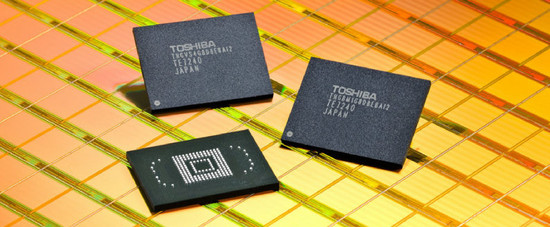Samsung and Toshiba have announced a joint venture to develop faster NAND flash memory technology, which will build up on the DDR2 specification with 400 Mbps data interface, far beyond the speeds available with current NAND technology.
Samsung has already used DDR NAND, also known as Toogle DDR, but then it used the DDR 1.0 specification with only 133 Mbps bandwidth. Now that Samsung and Toshiba are eyeing DDR 2.0 it has several times faster interface and the companies says that this is the next big step in the development of NAND flash.
– Toggle DDR provides a faster interface than conventional NAND using an asynchronous design, delivering the benefits of high-speed data transfer to a wider market, such as for solid state drive (SSD) applications including enterprise storage, mobile phones, multimedia terminals and consumer products, Masaki Momodomi of Toshiba
The difference between the DDR2 NAND specification to the current SDR NAND technology is ten fold in bandwidth, going 40 Mbps up to 400 Mbps.

Both Samsung and Toshiba are working on standardizing the new DDR2 NAND technology through the JEDEC Solid State Technology Association.















